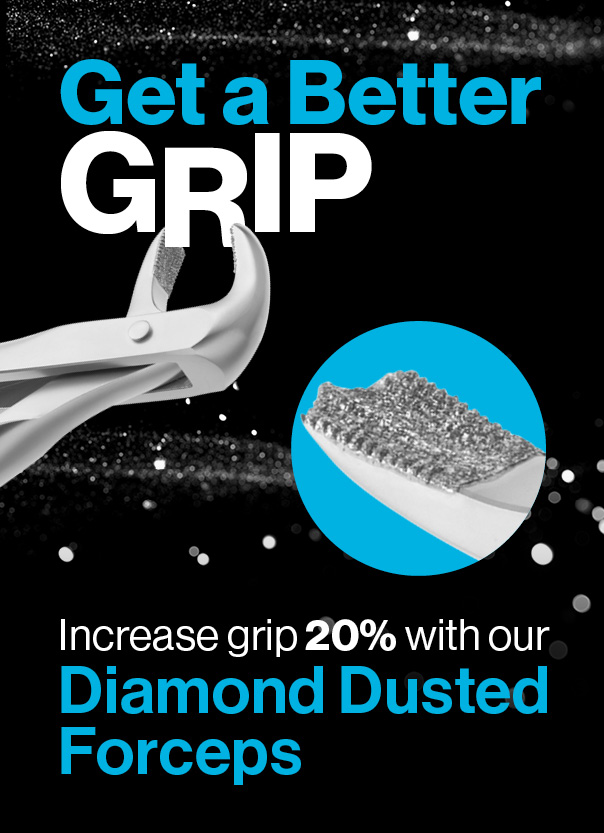Blog
How to Embrace Change in Your Dental Practice

Try These New Ideas to Refresh Your Practice
You wake up. You stumble downstairs. You start the coffee. You feed the dog. You glance at your email on your smartphone. You’ve acted out this routine so many times, you could do it with your eyes closed (well, maybe not that last part about checking your phone).
So many aspects of everyday life are locked into routine, we rarely wonder if we could go about them differently – or if they could be better. Perhaps, for example, you could program your coffee maker the night before, saving yourself a few minutes in the morning. Maybe your spouse could feed the dog. Why not?
Routine is also a driving force in dentistry. But should it be? We constantly (we might even say “routinely”) hear about new technology, systems, and products with the potential to make our practices more efficient, our outcomes better, and our patients happier. And yet, although we might be intrigued by the new options, we tend to stick with our routines, partially out of momentum and partially out of stubborn insistence on “this is how we’ve always done it.”
Well, as Dental Economics Chief Editor Chris Salierno writes, “Let's enjoy the delightful snapping sound of an old routine being broken.”
Are there any routines holding your dental practice back? Here are a few options to consider to refresh your practice.

Give Up Hand Scrubbing
While most practices use an ultrasonic cleaner as their primary tool for cleaning their instruments, some still choose to scrub by hand as an additional step before or after the ultrasonic; however, there’s no good reason for this, except that it’s the way you’ve always done it.
Removing debris from dental instruments before sterilizing them is critical. The debris can prevent the steam from reaching the surface of an instrument. But scrubbing by hand is neither the most efficient way to clean your soiled tools, nor is it the most effective way. It also creates opportunities for sharps injuries.
The Centers for Disease Control and Prevention says, “Automated cleaning equipment (e.g., ultrasonic cleaner, washer-disinfector) should be used to remove debris to improve cleaning effectiveness and decrease worker exposure to blood.”
While your instruments are awaiting their turn in your automatic cleaner, you should pre-treat them with an enzymatic spray gel to keep the material from drying out and hardening. Also, be sure to test your cleaning process regularly with monitor strips made for ultrasonic or automatic cleaners.
An important part of breaking a routine is trusting in the new process. When it comes to instrument reprocessing, this is where protocols and processes play an important role in setting the right tone. Establishing an effective, compliant process is no easy task, but resources like the GreenLight Dental Compliance Center™ by Hu-Friedy help practices develop protocols that improve clinicians’ routine.

Embrace AIRFLOW® Therapy
Why wouldn’t you want to adopt a technology that promises superior patient care, increased efficiency, more patient retention, and higher revenue? The answer has mostly to do with the age-old reluctance to try new things.
For years, the go-to method for removing stains and biofilm has involved a combination of ultrasonic and hand instrumentation followed by rubber cup polishing. And it works. But even the most adept hygienist can only go so fast, and it’s often an uncomfortable experience for patients.
Air polishing with low abrasive powders has proven to be a faster and more comfortable way to remove biofilm.
Two studies looked at air polishing with a glycine powder versus traditional methods of scaling and root planing. While there was no difference in the quality of results, air polishing slashed up to a minute off biofilm removal in deep pockets, and patients reported increased levels of comfort.
Previous generations of air polishing systems blasted patients with gritty powder that stung and created a mess. The latest generation, typified by Hu-Friedy’s AIRFLOW® Therapy, enhances comfort and removes biofilm safely and effectively on all surfaces, including tissue, enamel, implants, orthodontics, and restorations.
AIRFLOW devices are compatible with fine-grained polishing powders. The new erythritol-based AIRFLOW Plus Powder has a grain size of just 14 microns. It’s safe to use for supra- and subgingival biofilm removal, but strong enough to efficiently remove light-to-moderate stain. The glycine-based AIRFLOW Perio Powder features similar properties, and both are gentle on enamel and restorative surfaces. For removing the toughest stains on enamel, there is AIRFLOW Classic, a sodium bicarbonate-based powder with a smaller, more comfortable grain size than older powders of the same formula.
Dentists and hygienists who use the AIRFLOW Therapy system have told us their patients prefer its speed and comfort. The system saves these practices eight to 12 minutes per patient – time they use, among other things, to sell other billable services.
So why rely on the old rubber cup routine when there’s an easier, quicker, and more effective way to get the job done? Maybe it’s time to break that habit.
Change Can Be Good
Humans are naturally anxious about altering our routines. Routine, in its predictability, can be a source of comfort. When we follow a routine day in and day out, we know what to expect from each day, and that can bring some calm into our chaotic lives.
But it’s also possible for routine to outlive its usefulness. At some point, certain routines can do more harm than good, such as when they prevent our dental practices from improving and serving our patients better.
If you feel your practice is mired in routine, try something different. We know change can be scary, but smart, calculated routine-busters can make a huge difference in practice efficiency.

